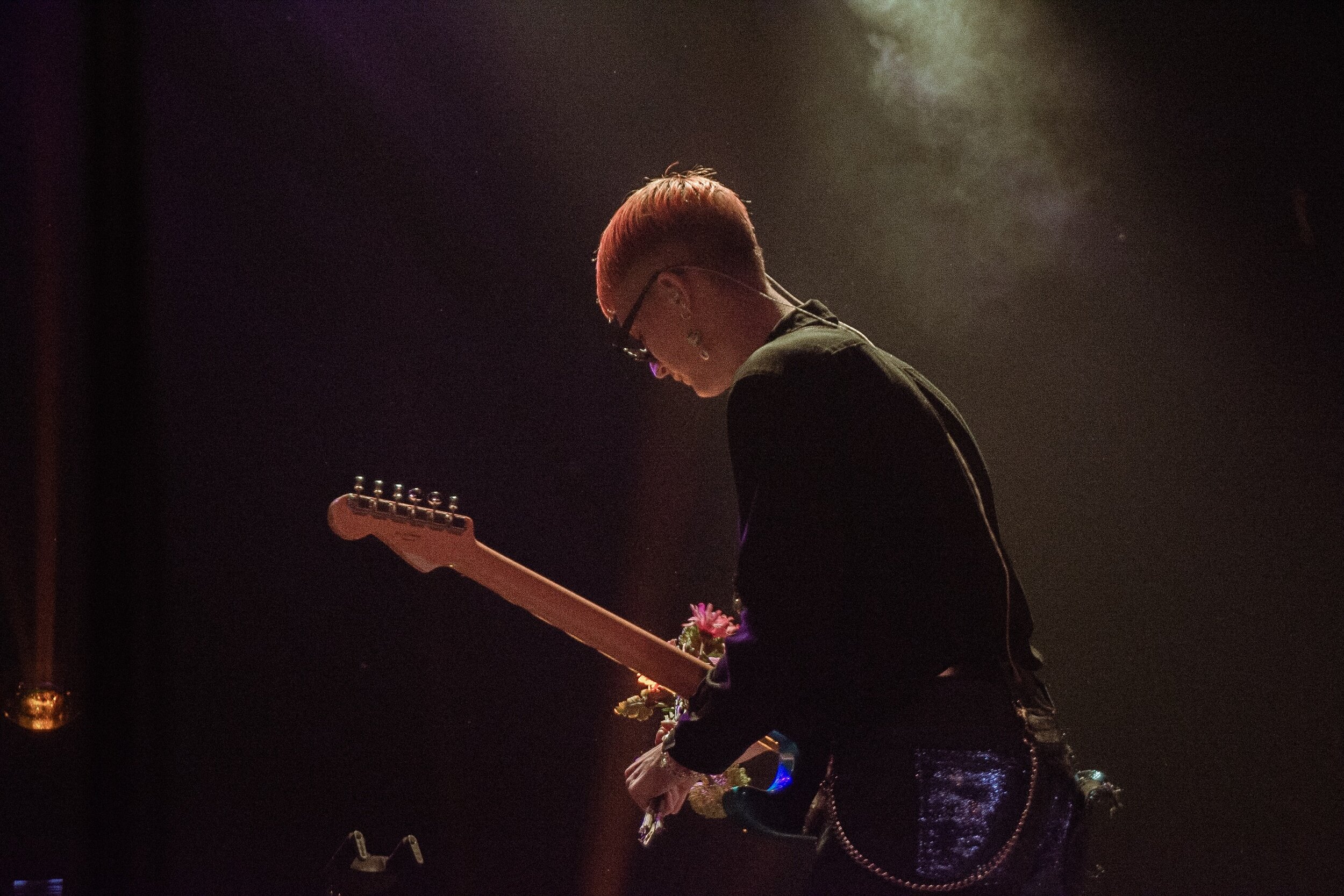Gus Dapperton Illuminates Webster Hall
Written by Felicia DiSalvo
As the suspenseful beat of “Verdigris” by Gus Dapperton began to play, a fully packed Webster Hall thundered under the jumping feet of hundreds of anticipating fans. The floor shook as these eager, inspired, and unique personalities awaited the beloved songs that give them an outlet to be themselves. At least, that is how I interpreted the energy around me. Gus Dapperton has created a fanbase filled with extremely individualistic souls. These fans—seen sporting bold and unusual clothing, accessories, and makeup looks—include artists of many different mediums and people who aren’t afraid to dream, gathering as a crowd to celebrate their inspiration at this historic East Village music venue.
Following the release of Gus Dapperton’s debut album, Where Polly People Go To Read, his fall tour of the United States has been one of the biggest of his career, featuring sold out venues across the country. The photographs I have taken and included here capture a segment of this tour experience. November 10th, 2019 at Webster Hall.
Gus Dapperton, born Brendan Rice, is an indie/bedroom pop artist from Warwick, New York. He is inspired by “heartache and world class cinema,” as he said in an i-D Magazine interview. These themes are displayed through Dapperton’s music, drawing in fans that are thrilled to connect his lyrics to their experiences.
Known for his colorfully dyed bowl cut hairstyle and daring fashion style, both inspired by his childhood, he creates an image that defines Gus Dapperton. Taking his stage name and developing his personal style enabled him to grow in his creativity and be himself. He alludes to his process of becoming himself in an interview with HYPESAGE! on YouTube, claiming it is necessary for his own survival. He says, “In order to survive I need to be myself. I would spontaneously combust from all the emotions built up inside of me; all of the feelings that I release through a creative outlet.”
In the midst of such a crowd of ambitious listeners and being in front of Dapperton, his band, and a myriad of songs charged with fantastical lyrics felt like being in another world. I have always described my experience of listening to his music as entering a world strange and new, yet so familiar. Seeing this concert come alive just affirmed how true this experience is. Dapperton showcases playful lyrics that work towards the personal and relative human experience, with a whimsical and unique flair, for an other-worldly feel to his music.
The pre-chorus and chorus of Prune, You Talk Funny highlight the playful word choice of his lyrics. They read:
And I would tread upon flowerbeds to stare and stop.
A hominid t’was blossoming from soot and sod.
Prune,
Eating all my food.
Well you’re like the bumWho begged and pegged me up all wrong.
I’ve got no two cents,
No sense at all.
The instruments Dapperton uses also contributes to this scene, including a synthesizer and a Fender electric guitar with effects such as or similar to chorus, reverb, and delay. These instruments create a bright, dreamy feel that complement Gus Dapperton’s unconventional singing voice. Dapperton often layers vocals and creates echo effects, further adding to this dream-like feel.
Gus Dapperton’s music videos evoke the same feeling through their polished production style. Despite bedroom pop music videos often opting for a more lo-fi and moody theme, Dapperton follows more of a traditional theme. They incorporate heavy emphasis on styling and having an original storyline. For example, the music video for “World Class Cinema,” directed by Matthew Dillon Cohen, was about Gus Dapperton’s desire to be a movie star. It featured recreations of iconic movie tropes seen a dream of his after passing out. Creating a video based around this concept evoke the feeling of fantasy. Similarly, the photo and video editing style featured in Jess Farran’s direction of “Coax & Botany” takes on a fantastical mood through the use of muted colors and less obvious camera angles.
Such a sense of unity and Gus Dapperton’s genuine love for making music brought myself and hundreds of his fans together before this Webster Hall stage. This tour has been such a pivotal stage in his career, and I cannot see Gus Dapperton slowing down anytime soon.
“In order to survive I need to be myself. I would spontaneously combust from all the emotions built up inside of me; all of the feelings that I release through a creative outlet.”

















